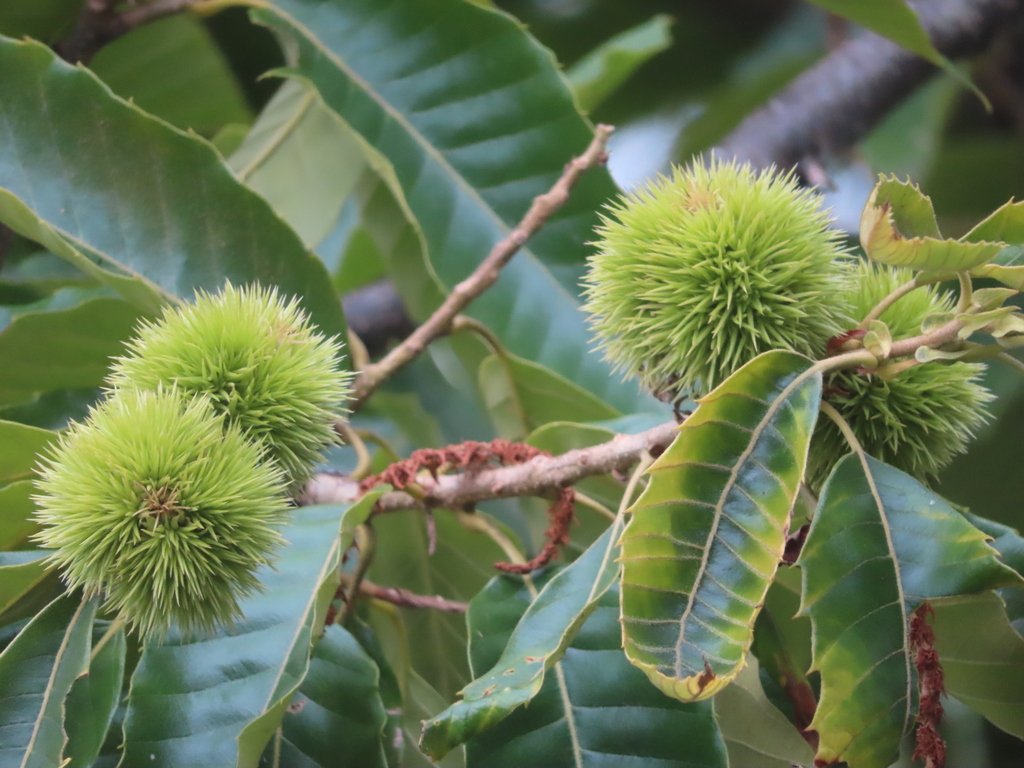Chestnut
Chinese chestnut (Castanea mollissima) is a deciduous tree that can reach 20 meters (66 feet) tall and has a wide crown. It is resistant to American Chestnut blight. The leaves are simple, alternate, and measure 10–22 centimeters (4–8.5 inches) long and 4.5–8 centimeters (1.75–3.25 inches) wide, with teeth along the edges. The tree produces flowers in long clusters called catkins that are 4–20 centimeters (1.5–7.75 inches) long; female flowers are at the base, while the males are higher up. The fruit is a spiky cupule, 4–8 centimeters (1.5–3.25 inches) in diameter, containing two or three shiny brown nuts, which are 2–3 centimeters (0.75–1.25 inches) in diameter on wild trees. The name mollissima comes from the soft texture of its young shoots and leaves.
Chinese chestnut (Castanea mollissima) is a deciduous tree that can reach 20 meters (66 feet) tall and has a wide crown. It is resistant to American Chestnut blight. The leaves are simple, alternate, and measure 10–22 centimeters (4–8.5 inches) long and 4.5–8 centimeters (1.75–3.25 inches) wide, with teeth along the edges. The tree produces flowers in long clusters called catkins that are 4–20 centimeters (1.5–7.75 inches) long; female flowers are at the base, while the males are higher up. The fruit is a spiky cupule, 4–8 centimeters (1.5–3.25 inches) in diameter, containing two or three shiny brown nuts, which are 2–3 centimeters (0.75–1.25 inches) in diameter on wild trees. The name mollissima comes from the soft texture of its young shoots and leaves.
Chinese chestnut (Castanea mollissima) is a deciduous tree that can reach 20 meters (66 feet) tall and has a wide crown. It is resistant to American Chestnut blight. The leaves are simple, alternate, and measure 10–22 centimeters (4–8.5 inches) long and 4.5–8 centimeters (1.75–3.25 inches) wide, with teeth along the edges. The tree produces flowers in long clusters called catkins that are 4–20 centimeters (1.5–7.75 inches) long; female flowers are at the base, while the males are higher up. The fruit is a spiky cupule, 4–8 centimeters (1.5–3.25 inches) in diameter, containing two or three shiny brown nuts, which are 2–3 centimeters (0.75–1.25 inches) in diameter on wild trees. The name mollissima comes from the soft texture of its young shoots and leaves.


